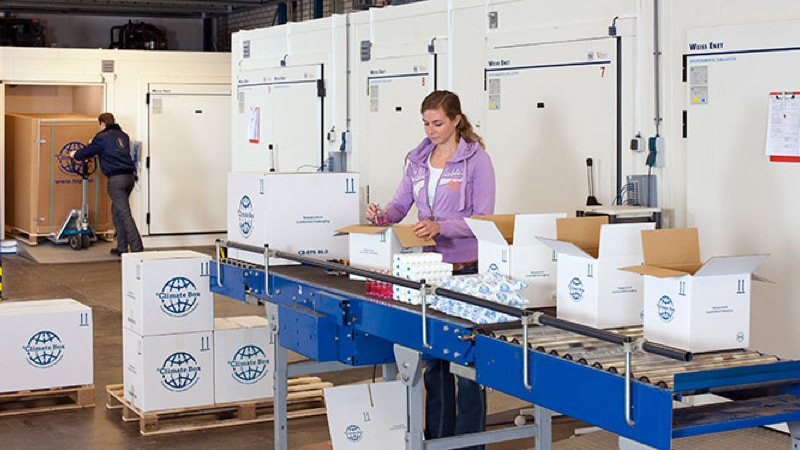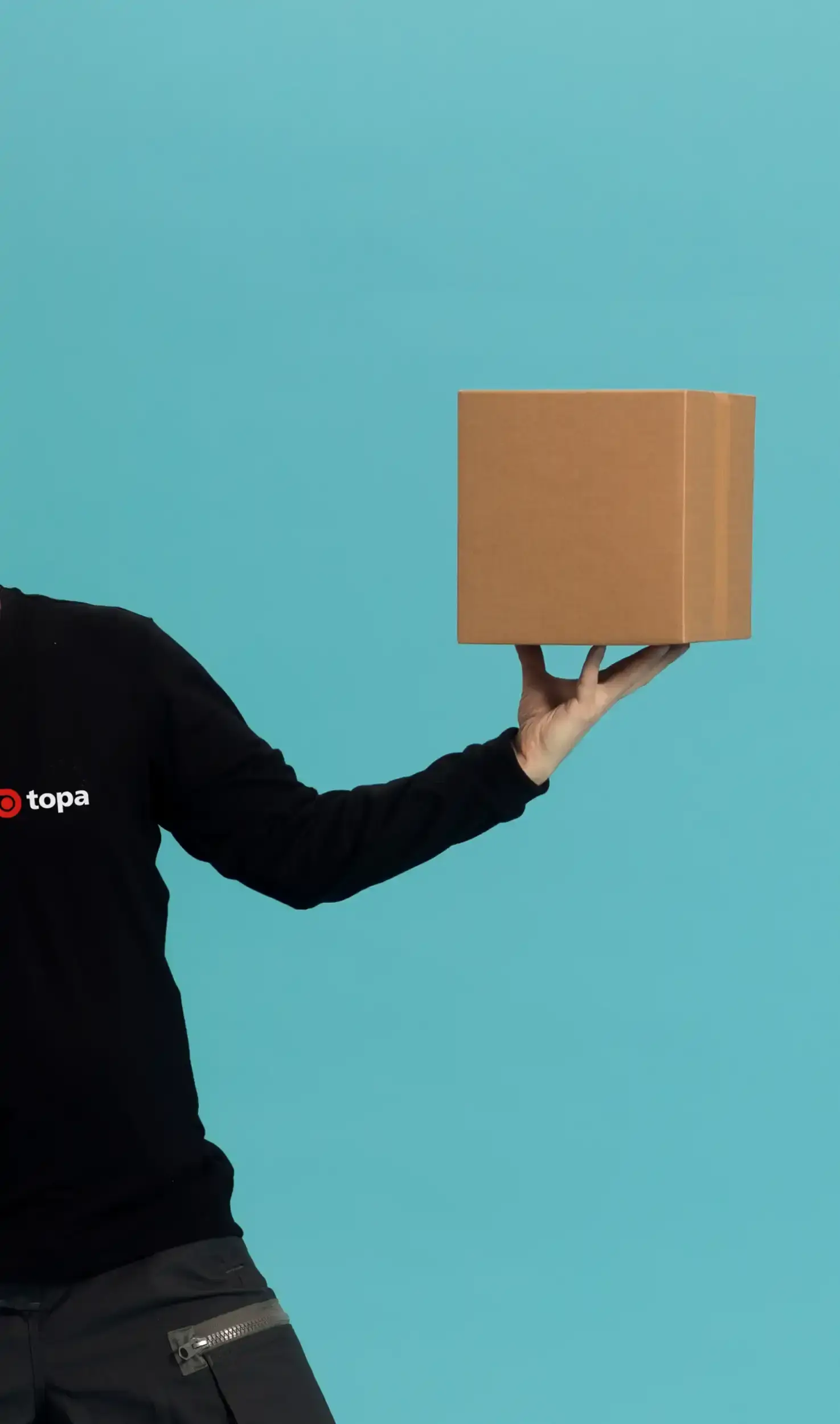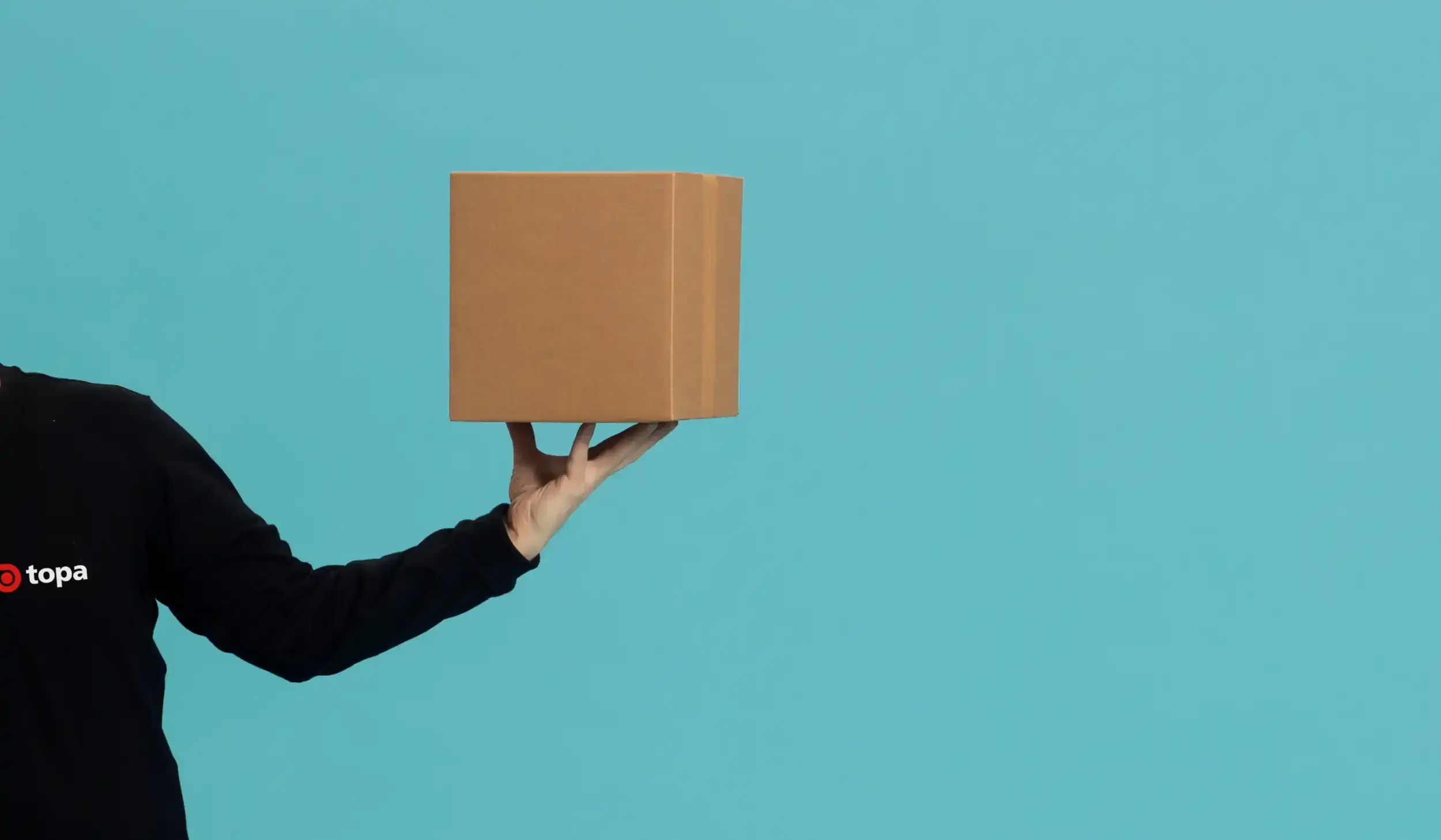Topa Institute: How does your product reach your customer perfectly? Part 2: climate testing!

You want your products to reach your customers in top condition. It is therefore crucial that your (transport) packaging offers the right protection. As a packaging specialist, we have our own test and research centre: Topa Institute. A testing environment where every step is so meticulously calculated, recorded and checked that even our competitors are happy to come to our lab to have their packaging tested. At Topa Institute, we carry out transport simulation tests, among other things. Under the motto “to measure is to know”, we test in a wide variety of ways whether your packaging meets all requirements and wishes. This time we look at climate testing.
At Topa Institute, we have 16 climate chambers
Products and their packaging face weather and temperature fluctuations during transport. Moisture, cold and heat all affect the packaging and the product. Kim Leeuwenkamp, Mechanical Project Engineer: “At Topa Institute, we have 16 climate chambers. There, we bring the packaging and the product or pallet load up to the expected temperature and humidity. Then we see how the packaging and the product react to high humidity or extremely low temperatures, for example.”
We can simulate temperatures from -80 to +70 degrees Celsius
Sometimes products need to remain frozen during transport. This usually involves pharmaceutical products, which are kept at the right temperature using, for example, dry ice. Sometimes products face high temperatures and high humidity during transport. Kim: “If a product is exported to tropical countries, the temperature in the containers can easily reach 60 degrees and the humidity is sometimes as high as 90%. We can simulate all these conditions. We can simulate temperatures from -80 to +70 degrees Celsius.”
The influence of moisture, cold and heat can weaken packaging
Kim: “I once experienced that the buffer in a package could not withstand the high temperatures. The protection had completely deformed due to the heat. We only found this out during the drop test, when the product fell out of the buffer. Based on that test, our packaging engineers modified the packaging with protective material that could withstand this extreme heat.”
Accelerated ageing tests on, for example, boxes with medicines
Topa Institute uses long-term temperature or climate tests to simulate the influence of moisture and temperature on the product and packaging. Kim: “Medicines, for example, must have a shelf life of five years and the label must remain legible for all that time. By increasing the temperature in the climate chamber, you can simulate an ageing process of 5 years in a few months. So this allows you to know very quickly whether the product, in combination with the packaging, meets the criteria. Actually, companies come to us not only to have packaging developed or to have their packaging tested, but also to see whether their product can withstand the constantly changing climate conditions and temperature fluctuations.”
Want to know whether your product and packaging can withstand high humidity and extreme cold and heat during transport? Contact Topa Institute: +31 252 245 350, or send an e-mail to info@topainstitute.com.

